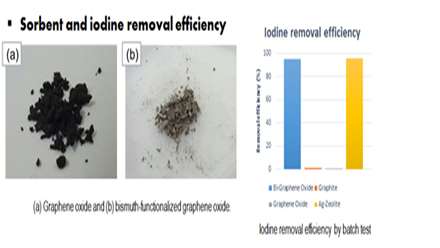방사성폐기물 관리 분야 | Radioactive iodine
페이지 정보
2017.03.07 / 2,935관련링크
본문
Radioactive iodine is one of the major constituents among fission products released into the environment from damaged containment at nuclear power plant (NPP) during severe core melt accidents such as Chernobyl and Fukushima as well asnuclear fuel reprocessing. Released radioactive iodine from nuclear reactor and nuclear severe accidents is one of the most hazardous radioactive contaminants and can create significant effect to human health. Several radioactive iodines such as I-131,I-135, I-125, and I-129 are the most important nuclides due to its high fission yield, volatility, environmental mobility, and significant radiological hazards. Among the isotopes of iodine, I-131 that has short half-life of 8 days is the most significant source term nuclide due to its large initial inventory. Also Iodine-129 is one of several radioactive iodine isotopes formed as a fission product in nuclear fuel. It has a very long half-life of 15.7×106years, and under goes beta decay and emission of gamma rays before forming stable Xe-129. |



